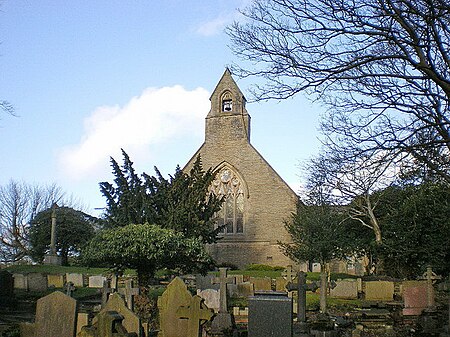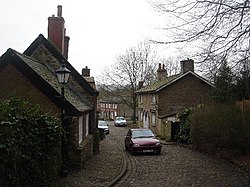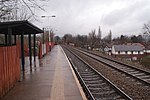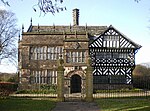St Maxentius' Church, Bradshaw
1872 establishments in England19th-century Church of England church buildingsAnglican Diocese of ManchesterChurch of England church buildings in Greater ManchesterChurches completed in 1872 ... and 5 more
English Gothic architecture in Greater ManchesterEngvarB from September 2013Gothic Revival church buildings in Greater ManchesterGrade II listed churches in the Metropolitan Borough of BoltonPaley and Austin buildings

St Maxentius' Church is in Bradshaw, Bolton, Greater Manchester, England. It is an active Anglican parish church in the deanery of Walmsley, the archdeaconry of Bolton and the diocese of Manchester. Its benefice is united with those of five other local churches. Standing separately from the church is the tower of an earlier church. The present church is dedicated to Saint Maxentius, an obscure French saint, and is the only church in England with this dedication.
Excerpt from the Wikipedia article St Maxentius' Church, Bradshaw (License: CC BY-SA 3.0, Authors, Images).St Maxentius' Church, Bradshaw
Bolton Road,
Geographical coordinates (GPS) Address External links Nearby Places Show on map
Geographical coordinates (GPS)
| Latitude | Longitude |
|---|---|
| N 53.6058 ° | E -2.4013 ° |
Address
St. Maxentius
Bolton Road
BL2 3EU , Bank Top
England, United Kingdom
Open on Google Maps




